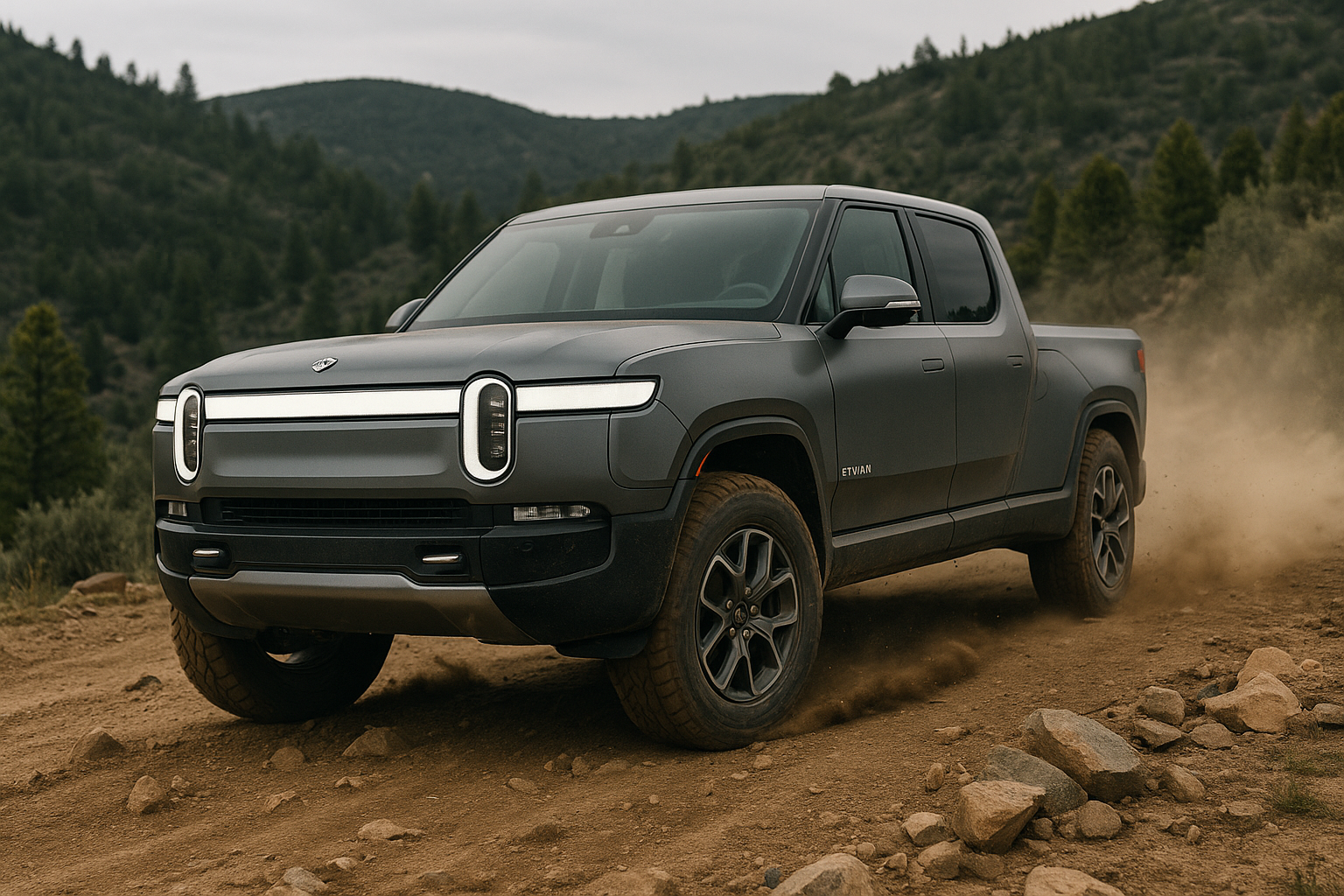Overview and Strategic Positioning
Rivian Automotive, Inc. stands as a compelling yet high-risk player in the increasingly competitive U.S. electric vehicle (EV) market. Established as a premium electric automaker, Rivian differentiates itself through adventure-oriented consumer vehicles like the R1T pickup and R1S SUV, as well as through its electric commercial delivery vans (EDVs). Its strategic partnerships, notably with Amazon and Volkswagen, bolster its credibility and growth potential, though they also create significant dependencies.
Manufacturing Footprint
Rivian maintains a strong commitment to U.S.-based production, primarily centered around its plant in Normal, Illinois. This facility, acquired from Mitsubishi Motors, currently produces around 14,611 vehicles quarterly, with recent expansions set to raise annual output to 215,000 vehicles. The plant handles end-to-end manufacturing for models such as the R1T, R1S, EDVs, and the forthcoming mid-market R2 SUV. A month-long production pause later this year will facilitate retooling for R2 production.
Additionally, Rivian has planned a substantial facility in Social Circle, Georgia, intended to produce up to 400,000 units annually from 2026 onward, focusing on more affordable R2, R3, and R3X models. Despite temporary financial setbacks, federal support in the form of a $6 billion loan has reignited construction, making timely completion a key indicator for Rivian’s future growth.
Critical Dependencies and Supply Chain Risks
Rivian's operational success heavily depends on a robust global supply chain for critical components such as batteries, semiconductors, and raw materials. The company sources battery cells from LG Energy Solution’s Arizona plant, scheduled to supply Rivian by late 2026. Semiconductor shortages pose ongoing risks, impacting Rivian's advanced vehicle systems and autonomous driving technology.
Strategic partnerships present both opportunities and vulnerabilities. The agreement with Amazon for 100,000 EDVs significantly validates Rivian’s commercial business, but reliance on a single major customer creates potential volatility. The $5.8 billion joint venture with Volkswagen to enhance Rivian’s software and electrical systems is similarly pivotal, with significant financial milestones dependent on successful integration and deployment.
Tariffs and policy changes, including recent U.S. tariffs on imported auto components and potential reductions in EV subsidies, pose notable cost and demand risks. Rivian’s adaptation to these economic pressures through adjustments in its supply chain remains critical to maintaining competitive pricing.
Product Portfolio and Market Share
Rivian’s existing product lineup emphasizes premium electric adventure vehicles. The flagship R1T pickup truck and R1S SUV are positioned at the higher end, with starting prices around $70,000 and $75,000, respectively. Both models received strong customer satisfaction scores, underscoring their brand strength in the premium EV segment.
The introduction of the R2 midsize SUV in 2026, priced at approximately $45,000, marks a significant strategic shift toward mass-market appeal, directly competing with Tesla’s Model Y. Future compact SUVs, the R3 and R3X, further extend Rivian's market reach into more budget-conscious demographics.
Currently, Rivian holds approximately 2–3% of the U.S. EV market, significantly trailing market leaders like Tesla, GM, and Ford. Production and delivery growth remains pivotal, with management targeting annual outputs exceeding 215,000 units by 2030.
Financial Health and Stock Outlook
Financially, Rivian faces considerable pressures, with high cash burn anticipated to surpass $21 billion through 2025. Despite robust cash reserves of $7.2 billion as of Q1 2025, ongoing investments, debt refinancing, and external funding remain necessary, underscored by the recent issuance of $1.25 billion in green notes.
Currently trading around $13.09 (July 2025), Rivian’s stock valuation demonstrates high volatility. Analyst projections highlight a base-case range of $15–$20 per share by 2030, assuming moderate production growth and eventual profitability. However, a bullish scenario—dependent on flawless execution, profitability by 2028, and increased market penetration—could push valuations toward $60. Conversely, continued operational challenges, intensified competition, and policy setbacks may constrain shares below $10.
Indicators to Monitor
Investors should closely track quarterly financial and operational metrics, particularly revenue growth, gross margins, adjusted EBITDA losses, and cash burn. Production figures, especially concerning the critical R2 launch and overall supply chain stability, remain vital indicators. Regulatory dynamics, including changes to EV subsidies and tariff impacts, should also be consistently monitored.
Strategic developments such as progress on the Georgia plant, successful execution of Volkswagen partnership milestones, and advancements in autonomous driving technology are further indicators of Rivian’s long-term viability.
Conclusion
Rivian Automotive embodies the complexities and potential of the EV market: innovative products, robust manufacturing presence, strong partnerships, but notable dependency risks. The upcoming R2 launch is particularly critical, potentially marking Rivian’s evolution into a broader market segment. Investors must vigilantly monitor operational, financial, and market indicators to navigate Rivian’s path through substantial growth potential tempered by significant execution risks.
